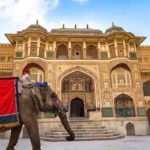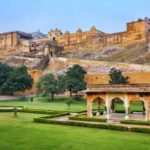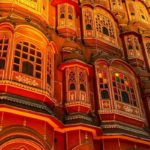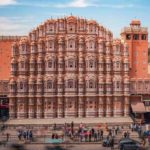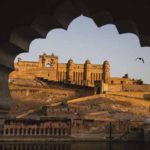Jantar Mantar Jaipur, is an astronomical observation site built in the early 18th century. It includes a set of some twenty main fixed instruments. They are monumental examples in masonry of known instruments but which in many cases have specific characteristics of their own. The Jantar Mantar Jaipur is an expression of the astronomical skills and cosmological concepts of the court of a scholarly prince at the end of the Mughal period.
The Jantar Mantar observatory in Jaipur constitutes the most significant and best preserved set of fixed monumental instruments built in India in the first half of the 18th century; some of them are the largest ever built in their categories. Designed for the observation of astronomical positions with the naked eye, they embody several architectural and instrumental innovations. The observatory forms part of a tradition of Ptolemaic positional astronomy which was shared by many civilizations. It contributed by this type of observation to the completion of the astronomical tables of Zij. It is a late and ultimate monumental culmination of this tradition.
Through the impetus of its creator, the prince Jai Singh II, the observatory was a meeting point for different scientific cultures, and gave rise to widespread social practices linked to cosmology. It was also a symbol of royal authority, through its urban dimensions, its control of time, and its rational and astrological forecasting capacities. The observatory is the monumental embodiment of the coming together of needs which were at the same time political, scientific, and religious.
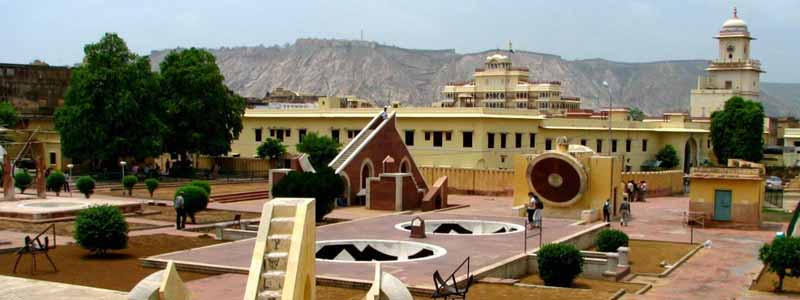
History of Jantar Mantar Jaipur –
Sawai Jai Singh II was a renowned scholar of his time. Once a while, Emperor Muhammad Shah assigned him a task to confirm and rectify the currently available data on the position and movement of celestial bodies.
Sawai Jai Singh was desperate to refine the tables of ancient Islamic zij to determine the exact time. In short, he aimed to create a well-defined calendar. He was keen on making accurate astrological predictions for the benefit of mankind.
To bring his dream to reality, he decided that he would construct Jantar Mantar Jaipur in the year 1718. For the same, he set out on a mission to extensively study the cosmological principles as laid down by the philosophical findings of Hindu, Islamic, European, and Persian civilization.
In this way, five different astronomical observatories were constructed across various states in India.
The largest amongst all was built in Jaipur in between the period 1727 to 1733. After that, it underwent frequent renovations with the lapse of time.
The available instruments have a broad range of cosmological applications. In the year 2010, this astronomical observatory got featured in the list of UNESCO’s world heritage sites.
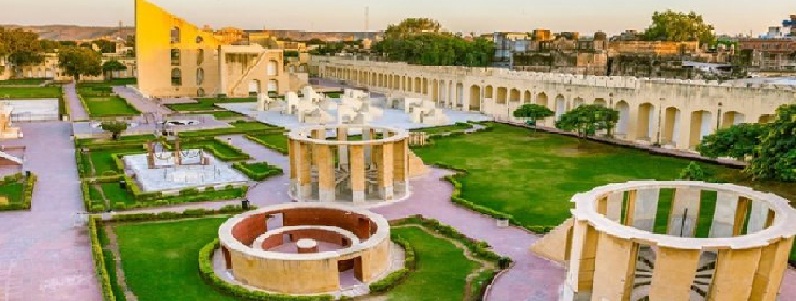
The architecture of Jantar Mantar Jaipur –
The astronomical observatory of Jantar Mantar Jaipur, is a collection of both astronomical and architectural instruments. In all, you may find around 19 major geometrical devices here. Each one of them has got its own specific application.
These devices are used to measure time; ascertain the declination of the planets and the planetary system; prediction of the eclipses; determination of the celestial altitudes, and tracking of the orbital stars.
Sheltering so many instruments, the entire observatory extends to a land stretch of 18700 metres. Interestingly, some of the instruments available here are amongst the largest in their own species.
The instruments of this astronomical observatory were carved out purely from stone and marble as they have got a tremendous potential to withstand climatic changes. Some of them were designed by Raja Sawai Jai Singh II himself.
A few of these instruments were carved out from copper and still are recognised for their undeniable accuracy. In terms of its dimensions, the Jantar Mantar Jaipur is the largest of all its counterparts present elsewhere in India.
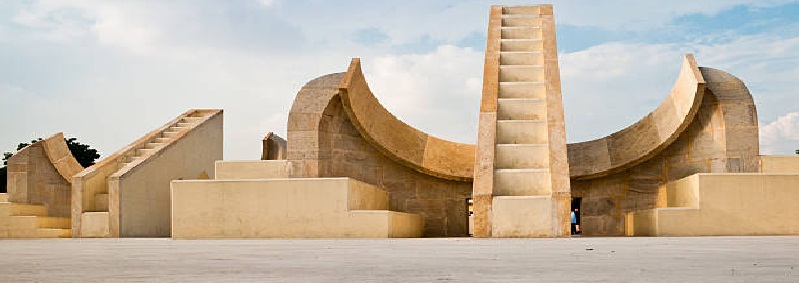
Attractions at Jantar Mantar –
Jantar Mantar Jaipur is home to a total of 19 astounding astronomical and architectural instruments. Here’s a list of some of the attractions you should never miss on while visiting this magnificent structure –
Vrihat Samrat Yantra – The Huge Sundial – This gigantic sundial is located at the centre of the observatory and is 27 metres long. This equinoctial sundial can measure time at the precision of two seconds.
The yantra has got a triangular-shaped wall whose shadow travels equal distances in equal time length. The yantra is positioned in the north-south direction and at an angle resembling the latitude of this location.
The movement of the shadow of the triangular walls is optimized to predict an accurate time.
Laghu Smarat Yantra – This piece of instrument is known as small Smarat yantra. As the name suggests, it is a small structure which can calculate the time at an accuracy of twenty seconds.
There is a ramp on the sundial which points in the direction of the North Pole.
Thus, it becomes easier to calculate the local time of Jaipur by correlating it with the movement of the ramp’s shadow through the finer divisions present on to the carved scale.
Ram Yantra – This yantra measures both the azimuth and elevation of the sun and other planets. Ram instrument comprises of a couple of tube-shaped structures which open in the direction of the sky.
Each tube structure has got a pole at its centre. All the poles are of equal heights. You get to see this type of yantra only in the Jantar Mantar Jaipur and Delhi.
Jaya Prakash Yantra – Jaya Prakash yantra comprises of two hemispherical sundials shaped like bowls and are graded with marble slabs.
As soon as the inverted image of the sky falls onto it, the inverted shadow movement helps to determine the elevation, hour angles, azimuth, and exact locations of the heavenly bodies.
Chakra Yantra – This is a ring instrument which helps the astronomers to calculate the hour angle and coordinates of the sun. There are four semi-circular arches where the shadows fall. This process reduces the declination of the sun four times in a day.
Digamma – Digamsa is the next instrument you can’t afford to miss. This instrument has two outer circles conjoint with a pillar in its middle. It is through this arrangement which helps the geographers to predict the exact timings for sunrise and sunsets.
Nadivalaya – Nadivalaya has got a pair of circular plates facing both north and south directions. The instrument represents two hemispherical regions of the globe. Walls of the device are aligned in such a manner that the instrument always appears to lie in parallel to the equatorial plane of the blue planet.
Kranti Vritta – Your excursion to the Jantar Mantar Jaipur won’t be completed if you miss on the Kranti Vritta instrument present within. With this instrument, you can quickly gain an insight into the Sun’s solar sign during in daylight.
When To Visit Jantar Mantar, Jaipur
Best time to visit Jantar Mantar: The best time of the day to visit Jantar Mantar Jaipur is noon. During mid-day, the Sun is vertically above and it is easy to understand the process of interpretation of the readings of each instrument.
Jantar Mantar Jaipur timings: Jantar Mantar in Jaipur remains open from 9:00 am to 4: 30 pm, on all seven days of the week. Generally, one can see the whole of Jantar Mantar in 30 to 45 minutes of time.
Jantar Mantar Jaipur entry fee: Jantar Mantar, Jaipur entry fee is INR 50/person for Indians and INR 200/per person for foreigners. The entry cost for Indian students is INR 15/person and that of International students is INR 25/person. Students get this discount on showing valid ID proof.
Jantar Mantar Jaipur light and sound show timings:
Oct – Feb: 6:30 pm onwards
Mar – Apr: 7:00 pm onwards
May – Sep: 7:30 pm onwards

